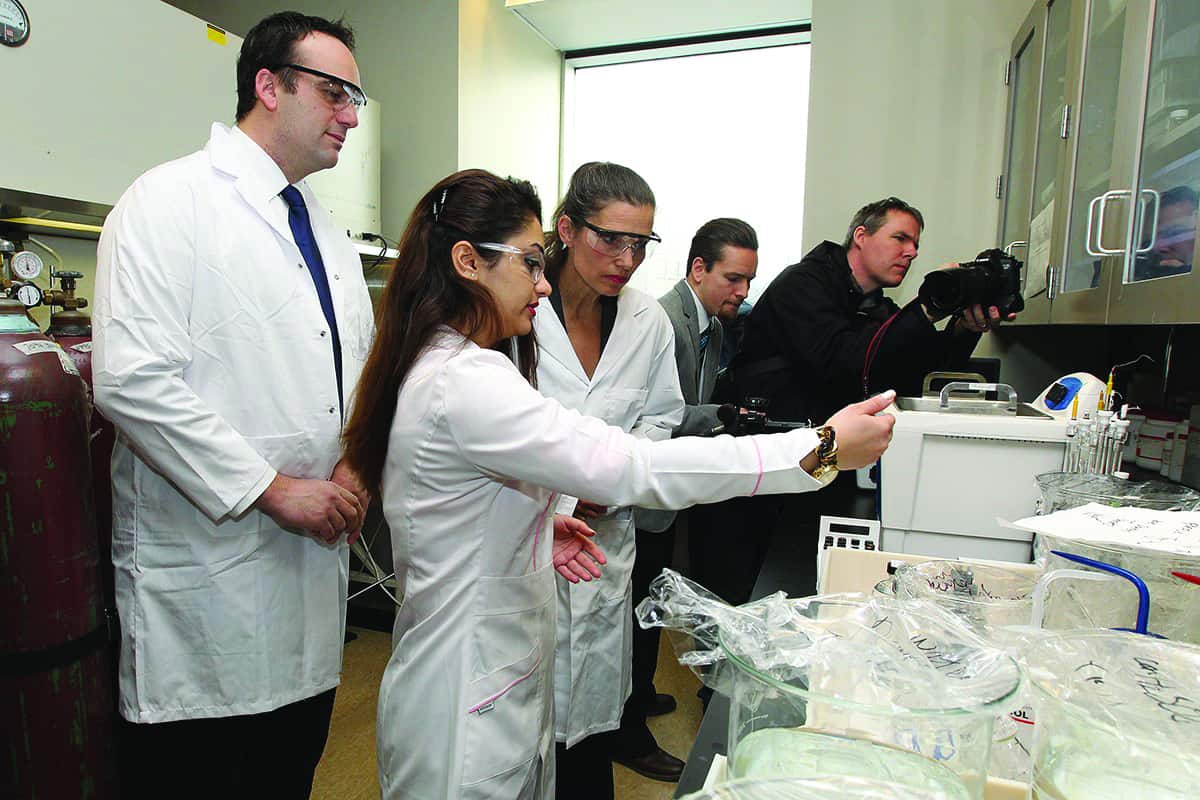On September 8, the Liberal government announced $515 million in federal funding for Canada’s science and engineering programs. More than $52 million went to University of Toronto researchers through the 2017 Discovery Grants program, run by the Natural Sciences and Engineering Research Council (NSERC).
“It is not directed research, and researchers do not need the permission of NSERC to pursue big ideas,” said Dr. B. Mario Pinto, the President of NSERC, in an interview with The Varsity. “So, it’s a highly valued program; it’s our flagship program.”
The grant’s freedom to explore is extremely important to researchers. Dr. Spencer Barrett, Professor of Ecology and Evolutionary Biology at U of T, asserted that one of the things that makes the Discovery Grants so useful is that “they’re not funding a specific project; they’re funding a research program,” a trait he believes will allow researchers to conduct a broad range of projects.
The flexibility of Discovery Grants is compounded by application success rates for both established and early-career researcher applications. This year’s rates were 66 and 69 per cent, respectively — more than double the success rates for researchers applying for National Institute of Health grants in the US.
High funding success does not benefit primary investigators alone. Pinto said that “60 per cent of Discovery Grant money is used for the support of students,” and he stressed that undergraduate researchers are an important part of the NSERC’s funding structure.
Dr. Sarah Finkelstein, an Associate Professor of Earth Sciences at U of T, told The Varsity that her grant allowed her to hire new graduate students and postdoctoral scholars, which boosted her team’s capacity for scientific inquiry. She called her 2017 funding “transformative” for her paleoecology research on Canada’s wetlands.
While the Discovery Grants have been well received, the government’s science budget still leaves something to be desired. In April, Canada’s Fundamental Science Review, chaired by former U of T President David Naylor, called for major increases in federal funding if Canada is to remain competitive on the global research stage.
Pinto pointed to an extra $30 million in basic science funding that the NSERC received last year, but he noted that budgets are not increasing at the rate necessary to keep pace with the best of the international community.
Federal funding levels are critical for Canadian contributions to international research efforts. U of T physics professor Dr. Hirohisa Tanaka, who works on the T2K neutrino project in Japan, said that “Canada’s particle physics funding has been completely flat since 2007, and we are trying to do more with the same.”
Despite budget constraints, the NSERC is working to ensure science in Canada is accessible to all groups. While acknowledging that the council has more work ahead to improve the representation of minorities, including Indigenous peoples, Pinto said the Discovery Grants program is flexible for researchers on non-linear education paths. He specifically cited their policy of automatic extensions for female scientists who become pregnant during their grant.
“The Discovery Grant is an investment in the best ideas of people,” said Pinto. “We leave it up to the imagination and talent of individual researchers to come forward with their best ideas. They can be blue sky ideas.”
The professors interviewed for this article are all awardees of the 2017 Discovery Grants program.
Barrett uses plants as model systems in a staggering set of fields in evolutionary biology. He’s currently interested in evolutionary transitions, including the evolution of self-fertilization, the evolution of separate sexes out of hermaphroditism, and the evolutionary transition from animal pollination to wind pollination. His grant money funds an extensive network of projects here at U of T and out in the field.
Finkelstein works in the fields of paleoecology and paleoclimatology. Her interests concern examining the long-term historical changes in ecology and climate, with a focus on the carbon dynamics of wetlands. This research has taken her from Canada’s Arctic to the heart of South Africa. Her grant currently allows her and her team to study the Hudson Bay Lowlands of northern Ontario, one of the largest peat wetlands in the world.
Tanaka works on the T2K neutrino project in Central Japan. The project investigates the oscillation of subatomic particles known as neutrinos using an accelerator that creates a neutrino beam from the west coast of Japan to the east coast, where a specialized detector is located. Tanaka’s grant supports a contribution to the T2K project that includes institutions across the country from U of T to the University of British Columbia.


